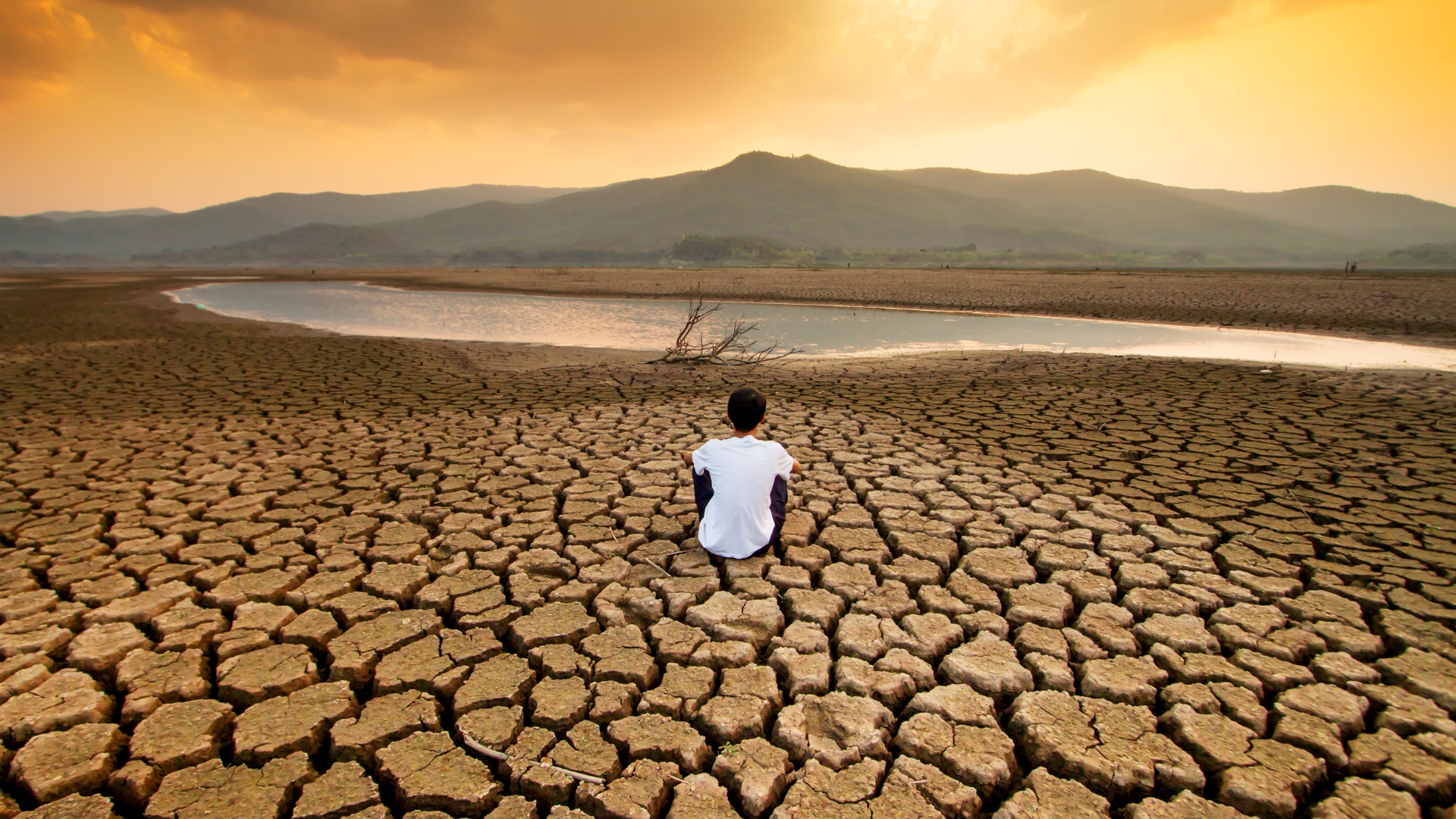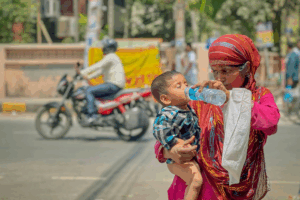COP30: What were the outcomes?
This year’s international climate conference, COP30, wrapped up in Belém, Brazil, last weekend. Following the failure of previous COPs to deliver the ambition and action needed to avert catastrophic climate…
Read More
Written by Olivia Nater | Published: May 15, 2025
A new study links emissions inequality to climate warming and extreme heat, finding that as much as two-thirds of global warming between 1990 and 2020 is attributable to the wealthiest 10 percent of the global population, while the richest 1 percent is responsible for a fifth of warming.
As global emissions continue to rise as a result of increasing consumption and population combined with humanity’s continued addiction to fossil fuels, the world’s poorest are bearing the brunt of the climate crisis.
 From 2000 to 2019, extreme weather events precipitated by the climate crisis such as droughts, floods, and heatwaves have on average caused $143 billion in damages per year. While the wealthiest countries and people are responsible for the majority of the greenhouse gas emissions that drive the climate crisis, it is the least developed regions and most vulnerable communities that are suffering the worst impacts.
From 2000 to 2019, extreme weather events precipitated by the climate crisis such as droughts, floods, and heatwaves have on average caused $143 billion in damages per year. While the wealthiest countries and people are responsible for the majority of the greenhouse gas emissions that drive the climate crisis, it is the least developed regions and most vulnerable communities that are suffering the worst impacts.
Previous studies have attempted to put numbers to this injustice. A paper published in 2022, for example, estimated that the wealthiest 10 percent of the global population accounted for nearly half of global emissions in 2019 through their consumption, investments, and trade, whereas the poorest 50 percent accounted for just over one-tenth of emissions.
The new paper by researchers at the International Institute for Applied Systems Analysis (IIASA), published in Nature Climate Change, is the first to calculate how this emissions inequality translates into actual climate impacts. In their analysis, the researchers linked wealth-based emissions data from the aforementioned 2022 study to changes in global temperatures as well as in the frequency of extreme heat events from 1990 to 2020.
The authors subtracted the emissions contributions of the wealthiest 10, 1 and 0.1 percent and modeled the climatic changes that would have taken place without them. They then compared those changes to the changes that have actually occurred to determine how much responsibility the wealthiest percentiles bear.
The global mean temperature was around 0.61°C higher in 2020 than in 1990. The researchers found that about 65 percent of that increase could be attributed to emissions from the global richest 10 percent. Another way of putting this is that the wealthiest 10 percent contributed 6.5 times more to climate warming than the average person. Contrary to popular belief, this tenth percentile (around 820 million people) is not a yacht-owning, private-jet-flying income group. In 2019, the richest 10 percent included everyone earning more than €42,980 (roughly $48,000) a year — close to the median US salary and well below the national average.
The wealthiest 1 percent, those earning more than €147,200 (around $164,500), were responsible for 20 percent of global warming between 1990 and 2020, while the richest 0.1 percent — the 820,000 or so people making more than €537,770 (around $600,000) annually, accounted for 8 percent of warming.
 The authors also analyzed how much the different income groups contributed to the increase in monthly heat extremes. They found that the wealthiest 10 percent contributed 7.3 times more than the global average to the increase in frequency of extremely hot months, while the top 1 percent contributed 25.7 more than the global average. The top tenth percentile also contributed 6.1 times the global average to droughts in the Amazon — a vital carbon sink increasingly compromised by the climate crisis — while the wealthiest 1 percent contributed 16.7 times more than the global average.
The authors also analyzed how much the different income groups contributed to the increase in monthly heat extremes. They found that the wealthiest 10 percent contributed 7.3 times more than the global average to the increase in frequency of extremely hot months, while the top 1 percent contributed 25.7 more than the global average. The top tenth percentile also contributed 6.1 times the global average to droughts in the Amazon — a vital carbon sink increasingly compromised by the climate crisis — while the wealthiest 1 percent contributed 16.7 times more than the global average.
Looking specifically at how wealthy groups impact the poorest, the study found that emissions from the wealthiest 10 percent in the United States and China (the top two national emitters) led to a two- to threefold increase in heat extremes across the most vulnerable regions, such as the Amazon, Southeast Asia, and southeast Africa.
The researchers also calculated how much warming would have occurred over this 20-year period if everyone on Earth produced greenhouse gas emissions at similar levels. They showed that if everyone had emitted like the bottom 50 percent of the global population, the world would have seen very little warming since 1990. Conversely, if the entire world population had emitted at the same level as the top 10 percent, the Earth would have warmed by 2.9°C — an increase considered catastrophic by climate experts. If everyone lived like the top 1 percent, the temperature increase would have been an unthinkable 6.7°C, while everyone emitting like the richest 0.1 percent would have led to a planet-killing 12.2°C of warming.
Other than the urgent need to cut global emissions (especially in wealthy countries), this study highlights two important points. The first is that climate justice demands wealthy countries do a lot more to help developing nations cope with the catastrophic changes they are now unfairly being hit with. Governments in high-income countries must urgently scale up funding for repairing and mitigating the damages their high emissions are inflicting on developing countries. “Loss and damage” funding for developing nations is severely lacking and sadly remains a point of contention at international climate conferences. The authors suggest that implementing a global wealth tax and redirecting harmful financial flows (such as investments in fossil fuels) could help raise the necessary funding.
A second important point not specifically mentioned in the study is the fact that our current population size of 8.2 billion and counting makes it incredibly difficult to meet climate goals while ensuring a good quality of life for all. The study demonstrates that we’d blast through the 2°C warming limit of the Paris Agreement if everyone in the world earned at least $48,000 per year. This means that at our current population size, there really is no “space” for billionaires, and that we need to drastically reduce consumption across the Global North, even among those not considered “wealthy” by US standards. The bad news is that our global population is on track to keep growing to more than 10 billion in the second half of this century, meaning we’ll need to tighten belts even more and dramatically ramp up climate action, especially decarbonization efforts, to avert the worst outcomes.
Investing more in empowering population solutions, such as removing barriers to voluntary family planning, would help slow population growth and put a decent quality of life for all in a safe environment within closer reach. Empowering women to take control of their fertility (and thereby slowing population growth) is also key to building resilience to the climate crisis and preventing catastrophic loss of life — many of the areas most vulnerable to climate change impacts are among the world’s fastest growing population-wise.